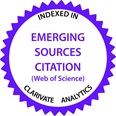Tytuł
Związek między konkurencją krajową a konkurencyjnością międzynarodową
Keywords
competitive balance, competitiveness, European football, Granger-causality
Słowa kluczowe
równowaga konkurencyjna,konkurencyjność,europejska piłka nożna,przyczynowość w sensie Grangera
Abstract
Purpose: The paper analyses two current topics in sport economics research and their relationship. Looking at the past 25 years and 21 countries as well as leagues in European football, it is worth looking for the answer to the question of whether there is causality between international competitiveness and competitive balance. In other words, whether an increase in the balance of the national league (namely in excitement) causes the development (better performance of the national team) of a given country’s football or this causality is reversed. Methodology: By measuring the extent of competitive balance and identifying the measure of competitiveness, the Granger causality was tested to analyse the relationship of the UEFA country coefficient, the FIFA World Ranking and the Herfindahl ratio of competitive balance (HRCB). Findings: Based on the estimation and testing of vector autoregressions in panel data, it can be stated that the FIFA World Ranking Granger-causes HRCB. Better sports performance of a country’s national team indicates that a given league will also be appreciated, meaning that better and better players will arrive in a better and better league, which will attract more exciting games, so a decrease can be observed in competitive balance. Research limitations: The study focused on only two indicators of competitiveness, so it is worth examining causality with more measures in the future. Value: From a management perspective, it is believed that the boards of leagues should consider the results presented in this study, such as that better presence of the national team will make the league more balanced, which will lead to a rise in demand.
Abstrakt
Cel: W artykule dokonano analizy dwóch aktualnych tematów badań w dziedzinie ekonomiki sportu i ich związku. Patrząc na ostatnie 25 lat i 21 krajów, a także na ligi w europejskiej piłce nożnej, warto poszukać odpowiedzi na pytanie, czy istnieje związek przyczynowy między konkurencyjnością międzynarodową a równowagą konkurencyjną. Innymi słowy, czy większa równowaga ligi krajowej powoduje rozwój piłki nożnej danego kraju, czy też ten związek jest odwrotny. Metodologia: Poprzez pomiar stopnia równowagi konkurencyjnej i identyfikację miary konkurencyjności zbadano przyczynowość w sensie Grangera w celu analizy związku współczynnika krajowego UEFA, światowego rankingu FIFA i wskaźnika równowagi konkurencyjnej Herfindahla (Herfindahl ratio of competitive balance – HRCB). Wyniki: Na podstawie oceny i testu modelu wektorowej autoregresji w danych panelowych można stwierdzić, że światowy ranking FIFA ma związek przyczynowy w sensie Grangera z HRCB. Lepsze wyniki sportowe reprezentacji danego kraju wskazują, że prestiż danej ligi również wzrośnie, co oznacza, że lepsze ligi będą pozyskiwać coraz lepszych zawodników, a drużyny będą rozgrywać ciekawsze mecze, a zatem dojdzie do obniżenia równowagi konkurencyjnej. Ograniczenia badawcze: Badanie koncentrowało się tylko na dwóch wskaźnikach konkurencyjności, dlatego w przyszłości warto zbadać związek przyczynowy za pomocą większej liczby miar. Wartość: Z perspektywy zarządzania uważa się, że zarządy lig powinny wziąć pod uwagę wyniki przedstawione w opracowaniu, np. to, że lepsza pozycja reprezentacji narodowej zwiększy równowagę ligi, co spowoduje wzrost popytu.
Recommended Citation
Fűrész, D., & Ács, P. (2020). The Relation Between National Competition and International Competitiveness. Problemy Zarządzania, 18(87), 11-26. https://doi.org/10.7172/1644-9584.87.1
First Page
11
Last Page
26
Page Count
15
DOI
10.7172/1644-9584.87.1
Publisher
University of Warsaw








